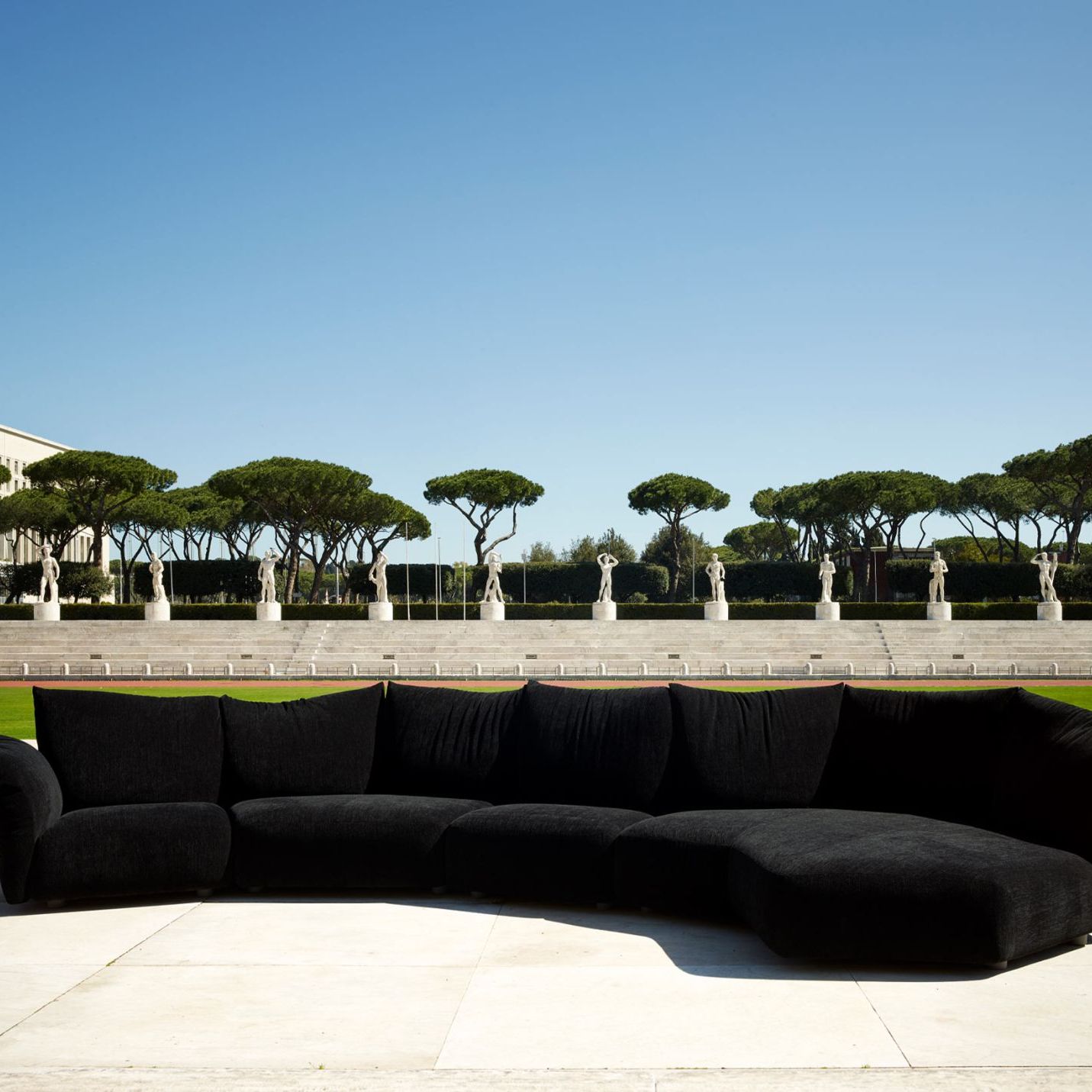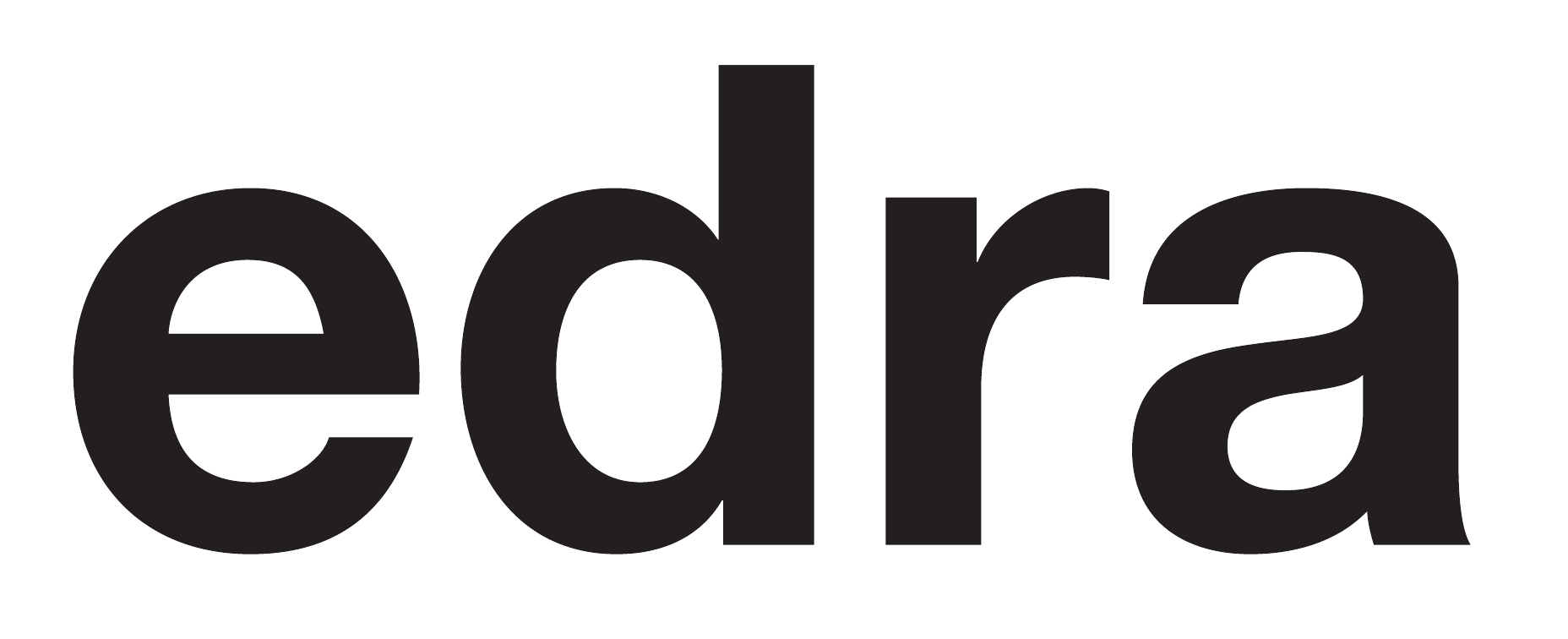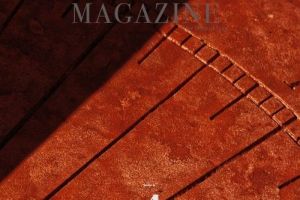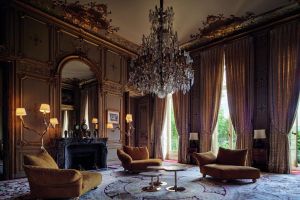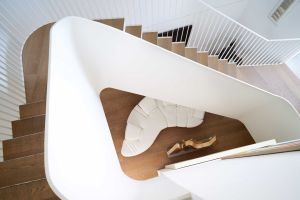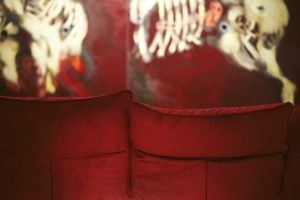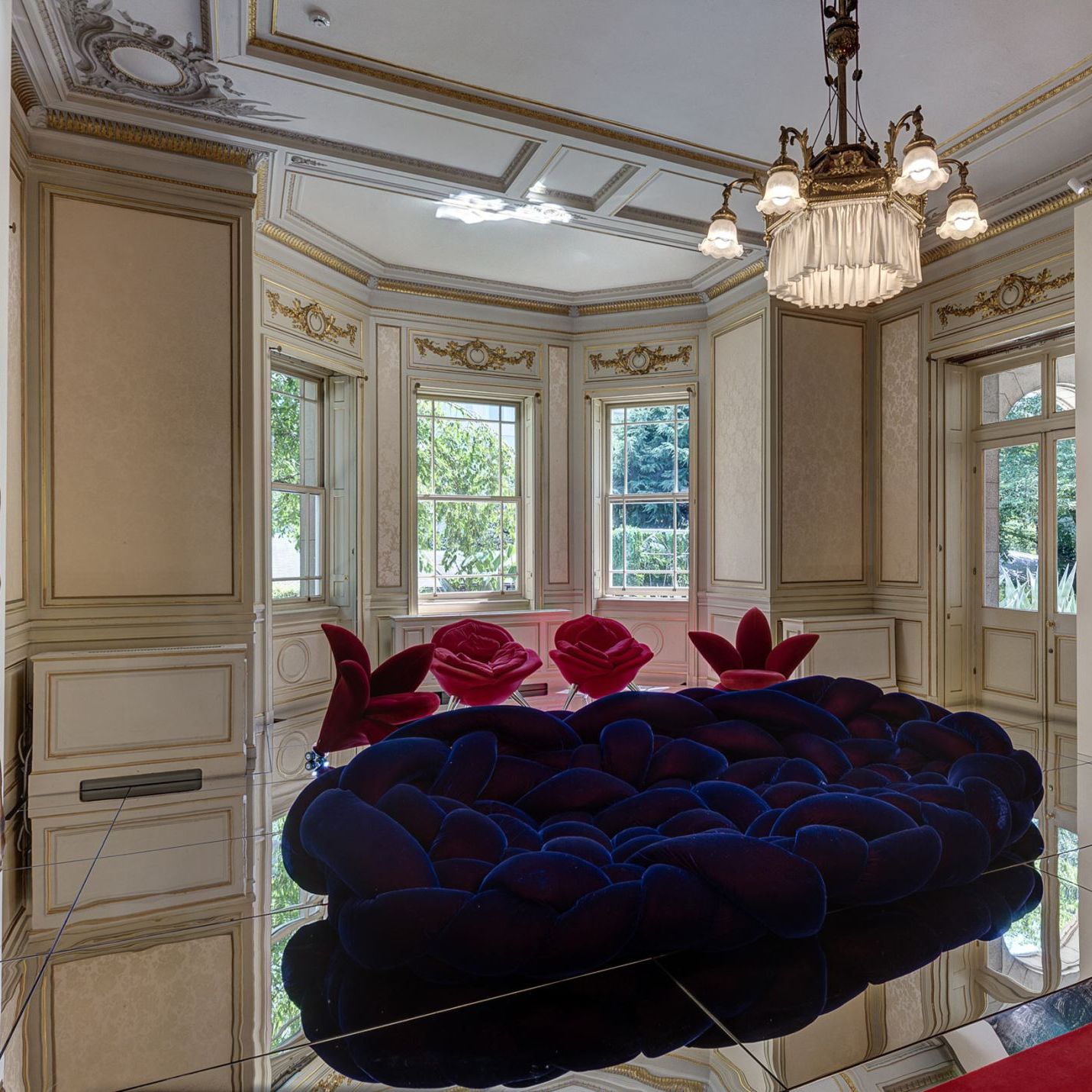
March 2022
Laura Arrighi
Sport, art and furniture intertwine in history and values
With Casa Italia Beatrice Bertini and Claudia Pignatale mark a new era in hospitality houses.
It was August 2016, the Olympic Games were being held in Rio de Janeiro. The Italian team had more women than ever before: out of 314 athletes, 170 were men and 144 were women. At the end of the event, the Italian medal table numbered 8 gold, 12 silver and 8 bronze medals. In addition to the sporting success, a special ‘gold medal for beauty’ attracted the attention of the press, professionals and the public. It was won by Casa Italia, which was set up by the Italian National Olympic Committee (CONI) to host the Italian athletes. It was located in the Costa Brava Clube, a Brutalist building designed in the 1960s by architect Ricardo Menescal. The property stands on a rock connected to the coast by a concrete bridge. It was the first time that a virtuous system of values linked to Made in Italy brands got involved to enhance and support the Olympic Team. Diego Nepi Molineris, CONI’s marketing director and manager of Casa Italia, said in an interview, “I can’t help but focus on our project - one that I am proud of. I believe it may mark the beginning of a new era of hospitality houses. Not only did the visitors feel at home in the Costa Brava Clube, including the large Italian population in Brazil, but so too did our country’s most important brands. In addition to sport, Casa Italia represents a real brand, an expression of Italy and Made in Italy.”
The first edition of Casa Italia (and the subsequent ones), as well as many other events related to sport, were organised by women: Beatrice Bertini and Benedetta Acciari, for the concept and art design, and Claudia Pignatale for the interior design. Beatrice Bertini worked for Gnam in Rome, Le Papesse in Siena and the Accademia di Belle Arti in Rome. Now she is the director, together with Benedetta Acciari, of Ex Elettrofonica, a contemporary art gallery that has marked a change in the architectural concept of exhibition space, becoming a place of interaction between the visual arts and architecture. Claudia Pignatale, an architect, founded the Secondome gallery, which combines limited editions, bespoke works and collectors’ pieces. Since Rio, Edra has accompanied Casa Italia around the world, helping to represent Italian excellence in all its forms, from art to design and innovation. Edra Magazine met Beatrice and Claudia to talk about their experience in the world of sport.
How did you get involved in this world?
Beatrice Bertini: I first met Diego Nepi during the Italian Open and our first conversation was particularly frank. Before the start of our collaboration, CONI had realised that art could bring prestige and distinction to corporate hospitality areas, those spaces where customers who wish to attend sporting events are hosted in the lounges. In the early designs, there were pictures hanging on the walls. When, as an art historian, I was asked for my opinion, I was not particularly complimentary. Art is its own language and it has to be spoken; it’s not a form of decoration. The pictures appeared to have been hung as decoration and to bring colour to the rooms. We watched energetic, young people play, but there was none of that energy in the rooms they showed me. After that chat I was asked to organise the next event.
Claudia Pignatale: Beatrice brought a breath of fresh air to tennis. When I was asked to work with her, I was thrilled. I started with the Italian Open in 2015 and from that experience our relationship of dialogue and design evolved and united us and led to Casa Italia.
Hospitality has changed a lot in recent years. What is your approach to the role of art and interior design?
Beatrice Bertini: The great work I tried to do was to communicate how this new way of understanding hospitality, in relation to the inclusion of works of art and objects, has to do precisely with the new energy that sport exudes. It is through those spaces that we have to talk of Italy as a vibrant and productive country. My first projects were with the 2013 and 2014 Opens. They were two painful editions, because I felt we were lacking someone who could enhance the works with interior design. When I met Claudia in 2015, I knew she could be that person. From that moment on, we started thinking about lounges as actual fully-rounded hospitality projects.
Claudia Pignatale: It was a huge challenge for us. Especially at the beginning. The goal was to make people understand the central role of art and design in the hospitality project, and not merely in a functional sense. We also involved the chefs in the concept, some of whom had doubts about the operation we were carrying out. Also food had to be part of the story we wanted to tell. It wasn't obvious, but once the concept was understood, everyone was enthusiastic to take part.
What is it like to work with CONI, as women, on the Casa Italia project?
Beatrice Bertini: CONI is a masculine environment, with all the nuances that entails. It is a very ‘muscular’ environment and you need to get used to a certain way of interacting. but it is pure energy and this stimulates our work.
Claudia Pignatale: We are the only women who work on the Casa Italia project, but we bring a collective story. What we have tried to convey is that it is the encounters and relationships between people that make telling this story possible. It’s not a question of gender. This type of approach worked and we have created a great team.
What have been and what will be the stages of Casa Italia at the Olympics?
Claudia Pignatale: The first project was the Casa Italia in Rio in 2016, based on the concept of Horizontal. The idea was to tell the story of the close bond that unites Italy and Brazil since the dawn of time, when Italian migrants arrived in America with their cardboard suitcases. When we visited our casa, Costa Brava Clube, this concept became very clear. In itself, the building already expresses a fantastic narrative, reminiscent of our famous Casa Malaparte, ten times larger, perched on a small island connected to the mainland by a 90-metre footbridge and overlooking the Rocinha favela, which from the Costa Brava looks like a nativity scene. We managed to get great figures from different worlds involved - artists and partners who fully represented the very best of our two countries, keeping our promise of virtuous contamination between the Italian and Brazilian culture. The result was a contemporary, fresh and welcoming environment. Then there were the 2018 Winter Olympics in Pyeongchang, South Korea. It was quite a challenge. We had to deal with Siberian temperatures and with a Golf Club that was not equipped for winter hospitality. We decided to transform the Yong Pyong Glof Club into a chalet, following the concept of Prospectum. The aim was to present our country through a cultural invention recognised throughout the world: the representation of perspective, updated and modernised by a contemporary language. Casa Italia was immersed in snow with access roads that resembled geometric lines drawn on a white sheet of paper. We invited artists who had characterised all the areas and sometimes interpreted the claim of the Italy Team, born in Rio, which at the time was Fire on Ice, to exhibit. The centrepiece of Casa Italia was the large fireplace with a light installation suspended above it. Tokyo 2020 was our latest stop, based on the concept of Mirabilia, rooms of wonders that have an important history in the world of art and storytelling. We tried to combine Italian and Japanese culture, focusing on Italian craftsmanship and relationships. We have fielded the feeling of the human being in his relationship with nature, the elements and the magic of everyday life.
The architecture of Takanawa Manor House, typical of late 19th century European houses, is spread over two floors: on the ground floor the Rose Chairs and Getsuen by Japanese designer Masanori Umeda welcomed guests celebrating the Japanese art of ikebana, flowers and their wonder. The red velvet roses and lilies were a tribute to the land of the Rising Sun to celebrate the delicacy and refinement of Japanese culture and welcome guests in a wonderful flowery room. Then there were the editions of the Italian Open and the experience of the Casa Italia Collection - FISI for the World Ski Championships in Cortina in 2021, which just ended. We transformed the 5 Torri restaurant into a place where Italian excellence was celebrated in every detail, from design to art, creating Spazio Amato (beloved space), from the work of Massimo Uberti, which is something different for each of us, but which is always a safe haven, a place that welcomes us. In this circumstance, the beloved space is Italy itself, it is where we are and where we come to support our athletes.
Beatrice, you are the one who presents these concepts. How do they come about?
The corporate hospitality themes stem from the idea of paying homage in some way to the country hosting us. We shouldn’t forcibly impose Italy on the host country, but try to find a connection between the countries. The three Casa Italia projects have this in common: attempting to find points of contact. In Rio, for example, we installed I Prismi by Giuseppe Gallo, which depict a real and invented collection of bronze carnival masks. In this way, we contemplated the exportation of the Italian Carnevale to Brazil. Prospectum in South Korea, on the other hand, was a theoretical discussion of the essay Perspective as Symbolic Form, in which Erwin Panofsky shows how each cultural era has developed its own way of representing space that can be understood as the ‘symbolic form’ of that particular culture. Perspective is, therefore, just one of the possible points of view in our interpretation of the world. There weren’t many points of contact between Italy and South Korea, therefore the idea was to propose a change of view and promote empathy and the ability to walk in someone else’s shoes, looking at things from a new and often unfamiliar point of view, growing and being enriched by our encounter with the other person. Our ambition is to realise a collective project that is taking shape and the stops follow their own logic: Horizontal is a line in the middle of a blank sheet of paper, Prospectum is the beginning of building a home, a safe place, Mirabilia is the moment in which we leave home and start looking at the world and nature with confidence, because we have a safe place to return to. We are building a story to be told. This project will run until Los Angeles 2028. It is interesting. We try to be consistent not only with the individual project, but also with the overall design.
How did the encounter with Edra come about?
Claudia Pignatale: It was 2007 and I had just opened a design concept store in Rome, the Secondome gallery, where I selected brands that for me represented design research, and one of these was Edra. During our site visit of Casa Italia in Rio, when I saw the Rocinha favela from the Costa Brava Clube, it was natural for me to think of Edra: the project could only be done with them. The Italy-Brazil union lies in their identity. In some way, the favela became our imaginary bridge with Italy. The Favela armchair - designed for Edra by the Brazilian Campana brothers - and what it represents, namely a set of values that go beyond architecture and design, became the focus of the Casa Italia project. The iconic piece embodied and expressed that deep connection we wanted to relate. The other Edra pieces have brought strong character to the rooms in Casa Italia and enhance works of art and the spaces. The Gina chairs in the restaurant refracted the Rio sun and lit up the room, while the On the Rocks sofas were our inner archipelago on the little island of Costa Brava. Each piece seemed to fit perfectly into the space, like a puzzle piece, something that was meant to be there. Then the partnership grew stronger. Pack in Pyeongchang 2018: the sofa with the bear was warmed by the fire in the fireplace we built especially for the event, a metaphor for the Olympic flame. And so on for all the other projects. Edra collections have always been able to respond to the narrative and to the various functional and aesthetic needs specifically and exquisitely.
DURING OUR SITE VISIT OF CASA ITALIA IN RIO, WHEN I SAW THE ROCINHA FAVELA FROM THE COSTA BRAVA CLUBE, IT WAS NATURAL FOR ME TO THINK OF EDRA: THE PROJECT COULD ONLY BE DONE WITH THEM. THE ITALY-BRAZIL UNION LIES IN THEIR IDENTITY. IN SOME WAY, THE FAVELA BECAME OUR IMAGINARY BRIDGE WITH ITALY
What has fascinated you most about the combination of art, design and sport?
Beatrice Bertini: Art and sport have many things in common, especially values. The philosopher Hans-Georg Gadamer wrote an essay on art as play, symbol and festival. He said that these were the three fundamental moments in which a work of art is made. Play is trying to do something without any purpose, like the child who throws stones into the sea for pleasure, it doesn’t meet a need. A symbol generates a timeless, long-lasting image, precisely because, although it is always the same, it will change in relation to the personality, the state of mind, the moment in life when the observer questions it. Lastly festival, the celebratory event when a group of people give credit to that work, which then acquires its artistic value. All this has a lot to do with sport: the pleasure of the game, the symbolic value, for example, of a medal and the Olympic event as a celebratory moment. On a practical level, if you consider high values: everything responds to those values.
We never thought of being didactic or thought of displays that had a sports theme. Portraying creativity, intelligence, respect for nature, emotion, perseverance and nationality creates links between the fields of sport, design and art that begin to interact spontaneously. These are absolute values that everyone can identify with, but they must remain purposeless. That is why we never let the market world into the events. We never talk about selling works and objects, because the values must remain high. There are economic benefits, of course, but we are not interested in that.
Claudia Pignatale: The athlete who makes it to the Olympics has given up everything to earn that place with sacrifice, passion, dedication. These are values that unite sport and the creative spheres. Casa Italia was also like a competition for us: two years of planning for a one-week installation that is assembled in three days and then vanishes.
What do you think of Edra?
Beatrice Bertini: Edra is daring, that’s what interests me most about it. There have been some products in its history that sprang from ideas that are a little crazy, if you think about the rules of the market. In art, we are used to working with unique pieces, but industrial production entails an enormous investment. I have a dreamlike idea of Edra because I feel it is similar to those who, like us, research the contemporary. Edra has faith in creatives and their potential. It has the ability to fall in love with an idea and bring it to life, with a visceral connection to the author. Which is what happens to us with art.
Claudia Pignatale: The union between Secondome and Edra is natural, because there is a common underlying philosophy about the nature of space and the function of the design that fills it. The creativity, versatility, research and narrative behind each creation have brought us closer and are the foundations on which a lasting collaboration can be built.
 |
Laura Arrighi Architect with a PhD in Design, and freelance web writer and editor. She mainly works in interior decoration, design and fashion and has a special interest in the hybridization of different disciplines. She juggles writing, research, teaching and design, as she works for public institutions and some of the most important Italian architectural firms. |
